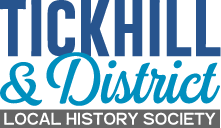

Tickhill's Austin Friary

Earlier this year, in the Winter Newsletter, Clarel Hall was featured with details taken from the Northern Star or Yorkshire Magazine. The Friary featured in the same publication, November 1817 issue. The building's subsidiary name 'Clarel Monastery' underlines the link between the Clarel family and the Friary. Nearly 300 years after the Friary was dissolved various details of the original building were noted in the Northern Star:
Tom Beastall's book has a history of the Friary on pages 54-9 and 82-3, while the Phototopics section of the Society's website also has a brief history of the Friary. Additional information can be found in A history of the County of York, Vol. 3 (1974) which is included in the British History Online website: <http://www.british-history.ac.uk>. For example, when the friars gave up their land and property on 19 November 1538, their house contents were sold for £5/1/8. Just under half this amount was given to the remaining eight friars, about 6/- each. The friars did not benefit from their land and property holdings at the time of dissolution which had brought in an annual rent of £8/6/2 from 57 acres of land in Tickhill, a cottage in Westgate and 'very considerable property' in Newton on Derwent.
Various families took over ownership of the Friary, one being the Gladwin family in the 17th Century. George Gladwin of the Friary married Jane Laughton on 8 April 1684. The following January, on the same day, the 27th, George's wife, age 21, died as a result of childbirth, was buried in what was formerly known as the Laughton Chapel in St Mary's and their daughter, also called Jane, was baptised. George Gladwin died in 1692 but his daughter survived to adulthood and married William Backhouse in 1708. In the 18th Century the Hawksworths, yeomen famers, occupied the Friary, their status recognised as leading citizens of Tickhill by one of them serving as churchwarden. In 1817 the Friary was the property of the Revd William Battle who had married into the Hawksworth family.
Later occupants of the Friary included the Leather family who had moved to Tickhill in the late 1870s. In the 1881 Census Frederick and Gertrude Leather are listed with five children, whose ages ranged from 16 to 1, and had 8 servants. The family moved away in the 1880s before returning after Frederick's death in 1890. They took a leading part in local life from 1899 (at the Church Bazaar in that year, for example), often being mentioned in Parish Magazines in the Edwardian period. Another family, the Flathers, bought the Friary in 1949 from Ken Lampson who in turn had bought the Friary after the War following the building's occupation by the military. Geoffrey Flather came from a distinguished family of 'steel men' and served as Master Cutler during 1951-52, the second member of his family to hold this post in the 20th Century.